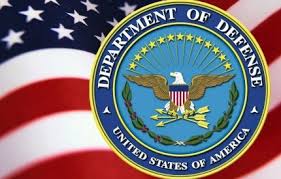CBC
News scored a fascinating coup on Monday when it disclosed the
existence of a dedicated Canadian human intelligence (HUMINT) unit in
Afghanistan-- one, according to Brigadier-General Denis Thompson, that
has existed in the combat theatre "essentially" since the commencement
of hostilities. According to documents obtained by the network, the
Canadian Forces (CF) will spend $27-million on equipment for the unit
over the next three years.
Unfortunately, the new information in the
CBC's story was handled in the usual slightly tone-deaf manner with
which civilian reporters treat military news; making matters worse was
a canned response from NDP defence critic Dawn Black, who complained
that human intelligence gathering in a war zone "raises all kinds of
red flags" (say, what have the New Democrats got against red flags?)
and stated, "There's never been a debate in Canada that I am aware of
on running an intelligence company out of the Canadian Forces."
Guys, honestly:Why even bother having a defence critic?
That
scary acronym HUMINT is, in truth, nothing more that mil-speak for any
relevant knowledge gathered by an army directly from human sources.
Other types include signals intelligence (SIGINT), obtained by
intercepting and decrypting the enemy's (or someone else's) information
transmissions, and imagery intelligence (IMINT), which comes from the
study of photographs taken from the air or space. It is not news that
the CF has been trying to strengthen its HUMINT-gathering capacity for
years; indeed, it has been openly recruiting bright, curious soldiers
for the purpose.
Most
of us now know how important SIGINT was in determining Allied success
in the Second World War; victory in Europe would have been delayed
considerably if high-level German cryptographic traffic hadn't been
cracked by the British, who essentially invented the digital computer
for the purpose. Yet the importance of human intelligence can scarcely
be overstated, though it is sometimes neglected by the historians. The
invasion of Normandy could not have succeeded without an enormous layer
of resistance-provided HUMINT, covering everything from the quality of
glider-landing sites to the dispositions of Axis forces guarding
bridgeheads. (By contrast, better Allied HUMINT might have saved the
failed Market Garden offensive of 1944 by tipping commanders to the
presence of two freshly arrived SS Panzer divisions in the
neighbourhood of the main thrust.)
Nevertheless,
as the shooting war turned into a balance of terror between
nuclear-armed superstates, HUMINT began to take more and more of a back
seat to technological methods of intelligence-gathering in the military
and espionage directorates of Western democracies, and this was
particularly true of Canada. But in the 1990s, theorists were clever
enough to see that emerging wars of the immediate future-- strikes at
"non-state actors," counterterror operations, humanitarian
interventions -- would require superior HUMINT and more trainees. If
your enemy is embedded amongst the people of an occupied country, you
need to be able to talk to the people.
Talking,
of course, probably isn't the reason the CF intends to burn through
$27-million. Much of what Canada's HUMINT company is probably getting
up to has very little to do with "spies" as such. The religious,
all-male, communal nature of the Taliban makes it virtually impossible
to infiltrate by means of cash (consider how little publicly known
progress has been yielded by means of the bounties on Osama bin Laden's
head) or other inducements.
Anyway,
even under ideal conditions, much of the work of a HUMINT agency is
sophisticated bookkeeping. Some of the expense will no doubt go toward
providing a credible security cover for installations in the region:
The Taliban cannot be allowed to blind our intelligence apparatus at
the cost of one suicide bomber. But a lot of it will be going toward
computers and software.
Tips
and reports from Afghan civilians opposed to the Taliban must be stored
in a way that makes them available for retrieval, rated for reliability
and plausibility and turned into memoranda for the timely use of
soldiers and staff. The toughest task of all is linking multiple
fragments of intelligence together so that they combine into a
trustworthy picture of, say, the location of a bomb factory or the date
of an attack. Military software developers have been putting a great
deal of effort into applying artificial intelligence to HUMINT
gathering: arming computers with natural-language recognition abilities
would help them navigate databases and put up flags when pieces of
evidence point in a common direction.
It
is absurd to demand a "debate" on whether a fighting force abroad
should have a HUMINT apparatus; it would be exactly like debating
whether it should carry ammunition. And the existence of such an
apparatus can only raise "red flags" in the eyes of a person who has
never devoted a moment's thought or study to how armies fight.
Colbycosh@gmail.com
